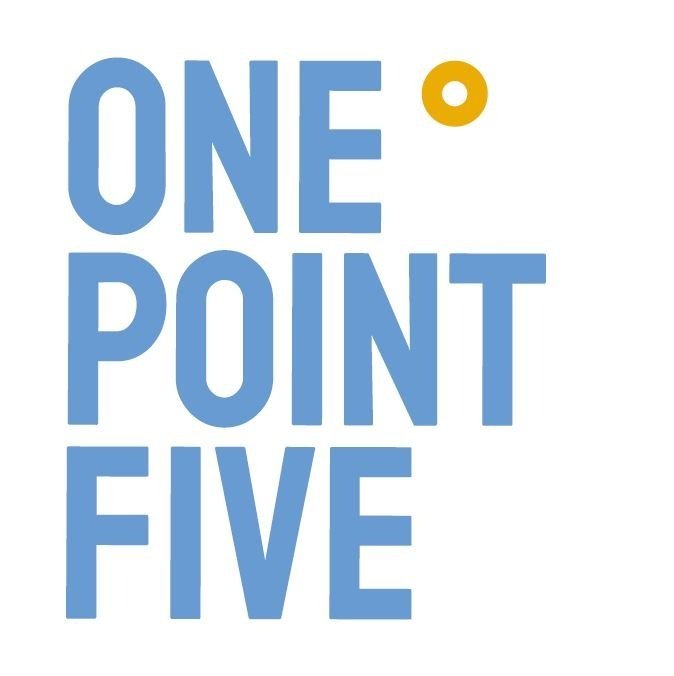What Role Does Hollywood Play in Climate?
Panel from left to right: Jane Fonda, Sylvia Arredondo (Communities for a Better Environment), Emily Atkin (HEATED), YoNasDa Lonewolf (speaker, author, climate activist), and Nalleli Cobo (speaker, climate activist).
Hello reader! I’m Ash Bowen, and I oversee marketing at OnePointFive. I spent a majority of my professional career working in Hollywood making movies, TV shows, and growing & launching brands at global entertainment agency IMG / Endeavor. I’ve been passionate about the environment and sustainability my whole life. Now I’m living and working at the intersection of climate and entertainment (and happy to share my thoughts with you)!
A few weeks ago, I attended the Hollywood Climate Summit at the Academy of Motion Picture Arts and Sciences in Beverly Hills, CA featuring Jane Fonda (a legitimate national treasure), The Daniels (Everything Everywhere All at Once), and Quinta Brunson (creator & star of Abbot Elementary). Other climate/entertainment-adjacent folks took the stage as well, sharing personal stories and perspectives on the role Hollywood should play in advancing climate narratives.
Panel from left to right: Emellie O’Brien (Earth Angel), Quinta Brunson, Daniel Scheinert, and Daniel Kwan.
It’s nice to hear popular creators talk about the energy-saving tactics and recycling processes required on film and television sets today. I’ve worked on many sets and can vouch this change is long overdue. However, if you’re reading this, I suspect we also agree that working sets aren’t the reason we’re in a fossil fuel-induced crisis. 100 global companies are responsible for 71% of Greenhouse Gas (GHG) emissions, and it’s hard to think about individual actions at craft services with stats like that.
But consider this— what happens if we unleash the world’s top creative minds to produce stories that change consumer behavior, ending our dependence on fossil fuels for good? This is the conversation we’re interested in having with our friends and colleagues in Hollywood.
Finding Compelling Ways to Tell a Climate Story
Think entertainment can’t change behavior? Think again. Folks weren’t flocking to the beach in the summer of 1975. Why? A little film called Jaws hit the screen. Sales for Reese's Pieces jumped 85% following the release of E.T. Audi saw brand awareness and sales skyrocket after a successful multi-year partnership with Marvel starting with the first Iron Man. There are countless examples of entertainment influencing consumers. Who’s to say we couldn’t do the same thing with climate stories?
To the studios and agencies claiming they can’t find a compelling way forward with climate narratives— I echo a panelist at the Hollywood Climate Summit: look harder. I worked with product placement, partnerships, and licensing teams across film and television and I know the time, care, and creativity that goes into finding organic opportunities for brands (see examples above). Why can’t we do the same for climate-friendly products and behaviors?
For a lot of people, the climate crisis is so massive, and so ingrained in every facet of our society, that it feels impossible to fix. That’s exactly what fossil fuel companies want you to believe— and it’s simply not true. Hollywood’s great storytellers can break down our GHG problem into more manageable, humanized stories that change the way we operate as a connected planet.
People have used storytelling since the dawn of time as a means of communication, community-building, and history preservation. If a story is emotionally charged, you’ll not only retain said information more effectively, but the story can trigger you to take action. If we go about deploying this framework around climate and sustainability, what does that look like? How can Hollywood help consumers make better choices when it comes to the health of our planet?
A Real Life Example: Downey’s Dream Cars
Robert Downey Jr’s new television series, Downey’s Dream Cars, is the current highwater mark. A celebrity using his megaphone (and the influence of his on-screen alter ego) to entertain and educate the general public about transportation’s clean energy transition, making solutions accessible and fun for the masses.
Via RDJ’s Footprint Coalition investment arm, Downey’s Dream Cars features other vetted, climate-focused organizations that provide additional solutions to the transportation sector (including mycelium leather for car interiors). Each episode becomes a mini case study about how climate-friendly products can make the products you need last longer, cost less, and ultimately help end our global dependency on fossil fuels.
So, how do we get more shows and movies like Downey’s Dream Cars into production?
Education is the Silver Bullet
There was a recent article in Variety with a concerning quote from Oscar winning writer / director Alexander Payne re: sustainable filmmaking— claiming he “has no idea what it means.” Is it possible that Hollywood is simply lacking the fundamental climate education necessary to tell the right stories and push for the kind of change we need to implement before 2030?
To quote one of my favorite TV shows of all time, “education is the silver bullet” when it comes to climate (from The West Wing, for those playing along at home). Our team at OnePointFive works closely with organizations ranging from Fortune 500 companies, to professional societies, to nonprofits, and everyone in between to help democratize climate education. I wonder what might happen if Hollywood’s creative giants took a few pages from our book?
In my opinion, there’s no better industry than Hollywood to help supercharge the general public’s awareness of climate-friendly products and practices that could help us meet our global emission reduction goals. If we could accelerate climate-knowledge amongst the creatives, studio executives, and agents sitting at the content controls— who knows what’s possible.
I’m excited to attend more events in the future with OnePointFive, see how this critical conversation evolves, and be part of the progress. If you’d like to stay informed and engaged in meaningful conversations like these, keep up with us by subscribing to our newsletter, and follow us on LinkedIn (OnePointFive), TikTok (@opf.degree), and Instagram (@opfdegree).




